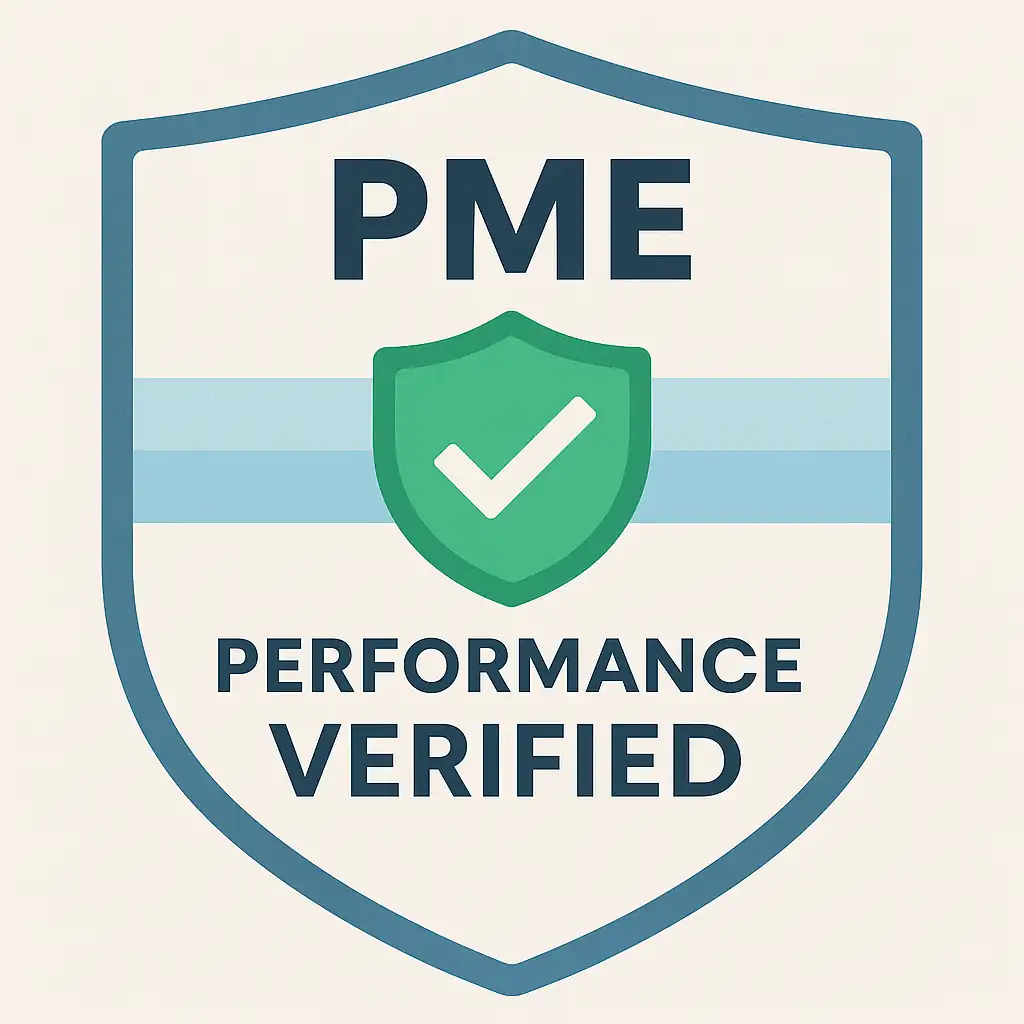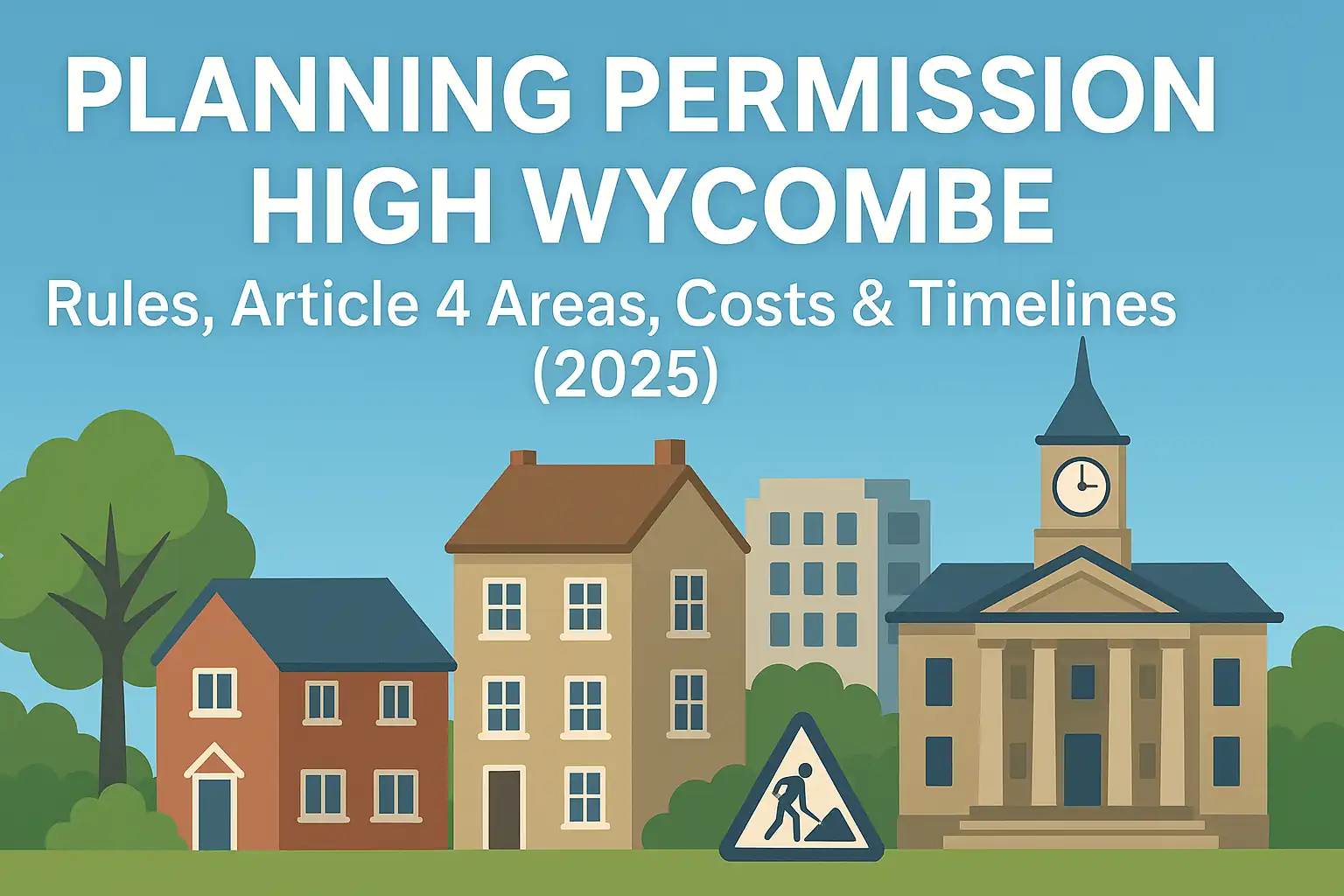Share this post:
🎥 Watch: Planning Permission High Wycombe: Quick Tips You Need to Know before you Start
Prefer to watch instead of read? Here’s our quick 3-minute guide on Planning Permission High Wycombe rules 👇Planning in High Wycombe?
We’ll confirm if your idea is Permitted Development or needs full planning — and what to do next.
High Wycombe at a glance
High Wycombe sits within Buckinghamshire Council’s planning authority. Many small home projects can proceed under Permitted Development (PD), but local controls — especially Article 4 Directions and conservation areas — remove or limit PD in parts of the town. If your proposal pushes beyond PD limits, affects a heritage setting, or changes access, you’ll need a full planning application.
- Check PD first, then local constraints.
- Budget for drawings, fees, and 8–10 weeks for a decision.
- Use the council’s online register to check nearby approvals.
Quick answer: do you need planning permission?
If your extension or alteration in High Wycombe stays within PD limits for size, height and position, you may not need full planning. You will need permission if you exceed PD, live in a flat/maisonette, your property is listed or in a conservation area, or you’re altering access (e.g., dropped kerb).
For a wider context, see our pillar guide: Planning Permission (UK) and our county hub: Planning Permission Buckinghamshire.
Rules & checklist (what to check first)
1) PD basics homeowners ask about
- How far can you go out without planning permission? Rear extensions at many houses have depth limits; larger depths often need “Larger Home Extension” prior approval. See Extension rules.
- Maximum height without planning permission: Eaves and overall height are capped under PD and depend on roof type.
- How high without planning permission? Two-storey works and raised platforms typically need permission.
2) Property type & location
- Flats/maisonettes: PD is very limited — assume you’ll need permission.
- Corner plots / highways: New access or visibility splays may require consent and highways input.
- Conservation / Article 4: PD rights can be removed; even minor alterations may be controlled.
3) Where to check live applications
- View planning applications in High Wycombe (council map/register)
- Use “search by address” or map to review decisions, officer reports and conditions.
National guidance: Planning Portal and GOV.UK: Planning Permission.
Local quirks: Article 4 & conservation
Parts of High Wycombe sit within conservation areas and Article 4 zones. Article 4 Directions remove automatic PD rights to protect local character — for example, controlling front elevations, materials, and roof profiles. Expect tighter scrutiny on design, glazing patterns and materials where streetscape is sensitive.
- Respect ridge heights and roof pitches visible from the street.
- Keep materials and window proportions consistent with the host house.
- Provide a short design rationale with your drawings if close to heritage assets.
Costs & timelines
- Application fee (householder): typically ~£258 (confirm latest on Buckinghamshire Council).
- Decision target: 8 weeks from validation (complex or heritage sites can run longer).
- Drawings: accurate plans/elevations + site plan are essential for smooth validation. See Planning Permission Drawings – Complete Guide.
For the bigger picture on speed and stages, read Planning Permission Timelines and budget using Planning Permission Cost.
Not sure if your idea fits Permitted Development?
We’ll check your project against PD rules and let you know if you need a full planning application.
Case study: Rear kitchen extension near a conservation area
A homeowner in High Wycombe wanted a single-storey rear kitchen extension. On paper the depth matched PD, but the plot sat within an Article 4 area close to a conservation zone. We recommended a full application with clear, scale-checked drawings and a short design note explaining materials, roof pitch and window rhythm. The proposal gained approval in just over 8 weeks with standard matching-materials conditions.
FAQs: High Wycombe planning
Where can I view planning applications in High Wycombe?
Use the council’s online register/map: View planning applications High Wycombe. Search by address or zoom the map to your street.How do I check if I need planning permission in High Wycombe?
Start with PD limits for your house type and location. If you’re in a conservation area or Article 4 zone, PD may be removed. For context, see Planning Permission (UK) and our county page: Planning Permission Buckinghamshire.What’s the maximum height or “how high” without planning?
PD limits cap eaves and overall height; dormers and two-storey works usually need permission. Check specifics in our guide: Do I need planning permission for an extension?How far can I extend without planning permission?
Depth limits apply and vary with house type and context. Larger depths can be possible via the “Larger Home Extension” prior-approval route. We can confirm quickly with sketches and measurements.Who is the planning authority for High Wycombe?
Buckinghamshire Council is the local planning authority for High Wycombe (former Wycombe District). Use their register to search applications and decisions.Where is the planning office / how do I contact them?
Contact is via Buckinghamshire Council’s online planning pages and forms. Response times vary; provide clear drawings to minimise back-and-forth.Conclusion
In High Wycombe, many small works are possible under PD — but Article 4 and conservation areas mean design and materials matter. Confirm PD early, produce precise drawings, and check local precedents on the council register. If permission is needed, a clear submission can still reach a decision in ~8 weeks.
Ready to move your project forward?
Plans Made Easy can prepare compliant plans, manage submissions, and guide you from idea to approval.
Next steps & useful guides
- Planning Permission (UK): The Complete Homeowner’s Guide
- Planning Permission Buckinghamshire — Local Rules & Quirks
- Planning Permission Timelines (UK Guide)
- Planning Permission Cost (UK)
- Planning Permission Drawings — Complete Guide
- Conservation Areas (UK): Rules, Consent & What You Can Do
External references: Planning Portal (national guidance) · GOV.UK — Planning permission

Performance Verified ✅
This page meets PME Optimisation Standards — achieving 95+ Desktop and 85+ Mobile PageSpeed benchmarks. Verified on


